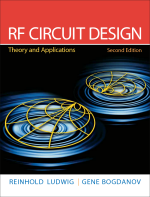Chapter 8: Matching and Biasing Networks

As pointed out in Chapter 2, to achieve maximum power transfer, we need to match the impedance of the load to that of the source. Usually this is accomplished by incorporating additional passive networks connected between source and load. These networks are generically referred to as matching networks. However, their functionality is not simply limited to matching source and load impedances for optimal power flow. In fact, for many practical circuits, matching networks are designed not only to meet the requirement of minimum power loss, but are also based on additional constraints, such as minimizing the noise influence, maximizing power handling capabilities, and linearizing the frequency response. In a more general context, the purpose of a matching network can be defined as a transformation that converts a given impedance value to another over a frequency range.
In this chapter, we restrict our coverage to the techniques of performing impedance transformation using passive networks. The emphasis is to ensure minimum reflections between source and load. All remaining considerations, such as noise figure and linearity, are left for discussion in Chapter 9.
We commence with a study of networks based on discrete components. These circuits are easy to analyze and can be used up to frequencies in the low GHz range. Next, we continue with the analysis and design of matching networks using distributed elements, such as microstrip lines and stub sections. These networks are more suitable for operating frequencies exceeding 1 GHz, or for cases where vertical circuit dimensions are of importance, as required in RF integrated circuit designs.
To simplify our treatment and to gain clarity in the design methodology, the Smith Chart will be utilized extensively throughout as a primary design tool.
